Hanfu Guide: Song Dynasty
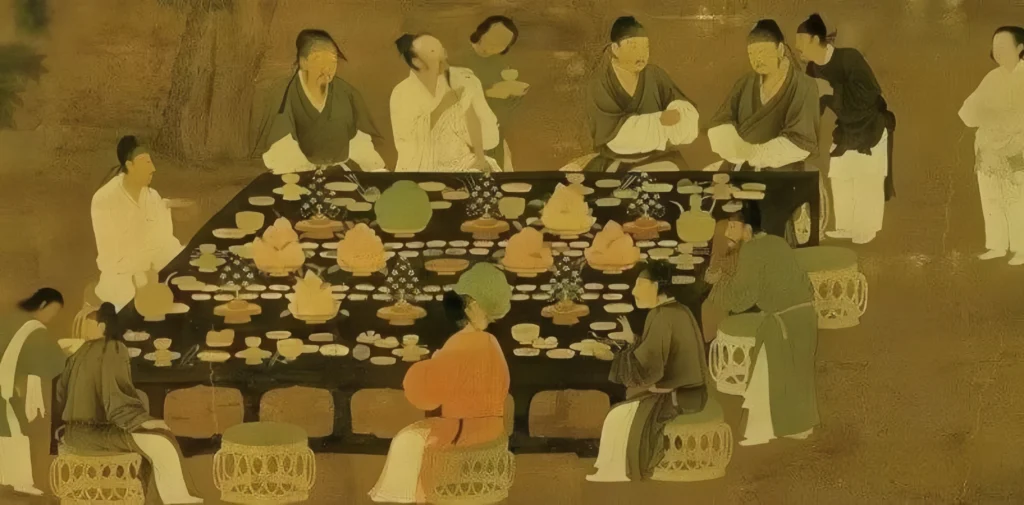

The Rise of Minimalist Hanfu in the Song Dynasty
The Song Dynasty (960–1279) marked a shift toward minimalist Hanfu, influenced by Neo-Confucianism’s emphasis on simplicity and personal cultivation. Unlike the bold, ornate Tang Dynasty attire, Southern Song fashion embraced a fresh, natural aesthetic. This era’s clothing preserved Han Chinese traditions while incorporating subtle influences from cultural exchanges, creating a unique blend of elegance and restraint. For a deeper dive into Song Dynasty culture, check out The Metropolitan Museum of Art’s Asian Art Collection.
The Song Dynasty’s minimalist approach to Hanfu defined an era of understated elegance. Curious about its cultural impact? Dive into the details!
As one of the three major Hanfu styles, Song Dynasty Hanfu holds a significant place in Chinese fashion history. This guide focuses on the Southern Song period, introducing the key features of Song Dynasty Hanfu.
While Song Dynasty clothing largely inherited Tang Dynasty styles in terms of colors and forms, the influence of Neo-Confucianism (Cheng-Zhu school) shifted aesthetics toward simplicity. Unlike the vibrant, ornate Tang attire, Song fashion embraced a fresh, minimalist, elegant, and natural vibe.
Historical Context
After the Song Dynasty’s establishment, Han Chinese clothing styles were largely preserved. However, prolonged warfare encouraged deeper cultural exchanges and fusion with other ethnic groups’ attire, enriching Song fashion.
Additionally, Confucianism, with its emphasis on personal cultivation and benevolence, dominated Song thought. While retaining much of the Tang’s clothing structure, Song attire moved away from opulence, favoring refined elegance.
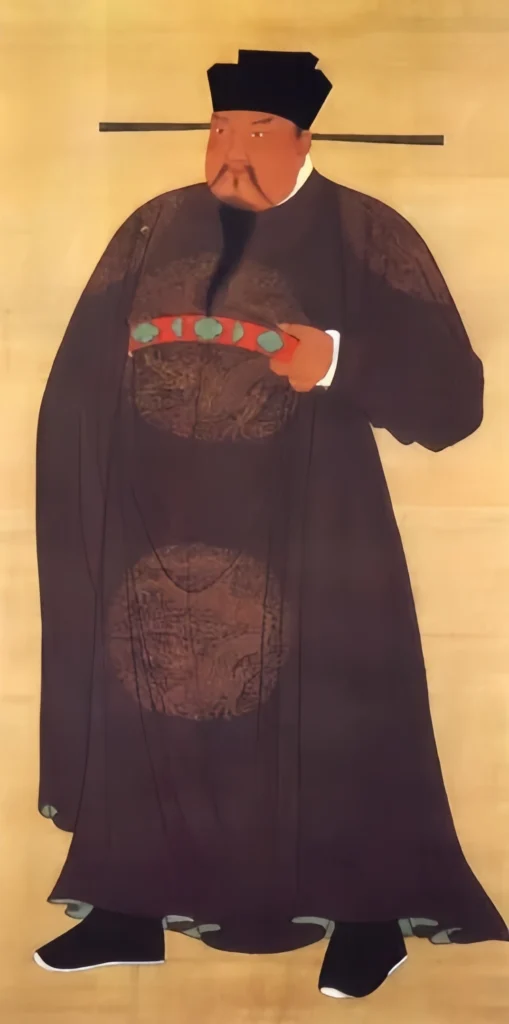
Overview of Song Dynasty Clothing
Women’s Clothing: Song women’s attire included inherited Tang styles like ruqun (blouse and skirt), aoqun (jacket and skirt), half-sleeves, shirts, skirts, and trousers, with the addition of the iconic beizi (a versatile outer layer).
Men’s Clothing: Men typically wore a futou (headwrap), round-collared robe, leather belt, and black boots or shoes. Compared to Tang styles, Song robes featured wider, longer sleeves and a lined collar.
Scholars’ Clothing: Scholars’ attire fell into three categories:
1) Wei-Jin-inspired tops and skirts with wide-sleeved robes;
2) contemporary Song styles like Taoist robes or beizi; and
3) simple narrow-sleeved long robes.
Official Attire: Song officials had two sets of clothing: ceremonial chaofu for major events like sacrifices or celebrations, and daily gongfu (public attire) for court and administrative duties.
Basic Styles
Song Dynasty Hanfu primarily consists of Song trousers, beizi, hundred-pleat skirts, wide sleeves, Song sashes, and waistbands, with variations based on social class.
Men’s Clothing
Official Attire
The gongfu (public attire), also called everyday attire, was worn by officials. It typically included a flat-winged black gauze hat (futou), distinct for its extended, straight wings, sometimes over a foot long. The attire resembled late Tang’s wide-sleeved, round-collared robes with an added horizontal hem at the bottom, cinched with a leather belt and paired with boots or black leather shoes.
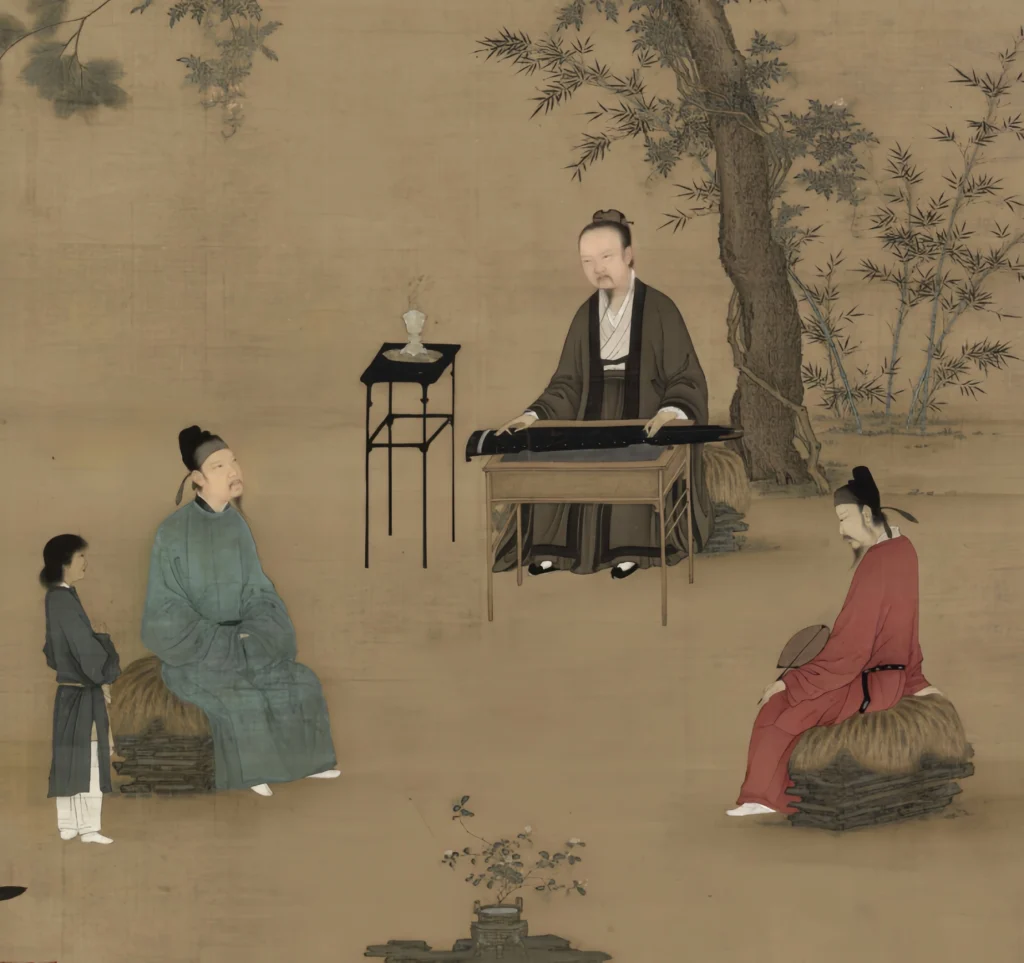
Common men’s garments included ru (blouses), ao (jackets), and shan (shirts), essential for daily wear.
Shirt: Also called a sweatshirt, available in cross-collar or straight-collar styles. Made of luxurious materials like silk, satin, gauze, or linen, in colors like white, cyan, black, apricot yellow, or tea brown. Jackets used similar materials, including cloth or leather. The white fine-cloth round-collared shirt was especially common.
Lan Shirt: A popular casual garment made of white gauze, with wide cuffs and a knee-length hem, known as the “cool shirt” for its comfort and simplicity.
Everyday Fashion
Southern Song fashion mirrored the North Song’s trajectory: starting with simplicity at the dynasty’s founding and growing more extravagant over time, despite imperial efforts to curb luxury. The thriving commercial economy fueled unique fashion trends, spreading from the capital to the rest of the country.

Women’s Clothing: Ceremonial and Everyday
Song women’s clothing was divided into ceremonial and everyday attire. Ceremonial attire was used by nobility and scholars’ families for formal occasions, but commoners could wear elevated attire (one rank above their status) for weddings to signify importance. Everyday attire varied in material and decoration based on wealth, but the styles remained consistent.
Song women’s clothing often featured decorative borders, called lingmo, on collars, cuffs, and side seams, either painted or embroidered, adding a refined touch to the minimalist aesthetic. Silk fabrics like gauze, plain silk, and satin were common, but luo (a woven silk with subtle patterns) dominated, especially floral luo, reflecting the era’s elegant and cultural depth.
Tube Top (Moxiong)
The moxiong was a women’s undergarment wrapped around the chest. Song tube tops came in two styles:
- Single-Piece: The most common, wrapped from front to back, tied with cords, sometimes with a triangular pleat in the center for a fitted, three-dimensional look.
- Backless: Secured with cords at the top and waist, offering a lighter design.
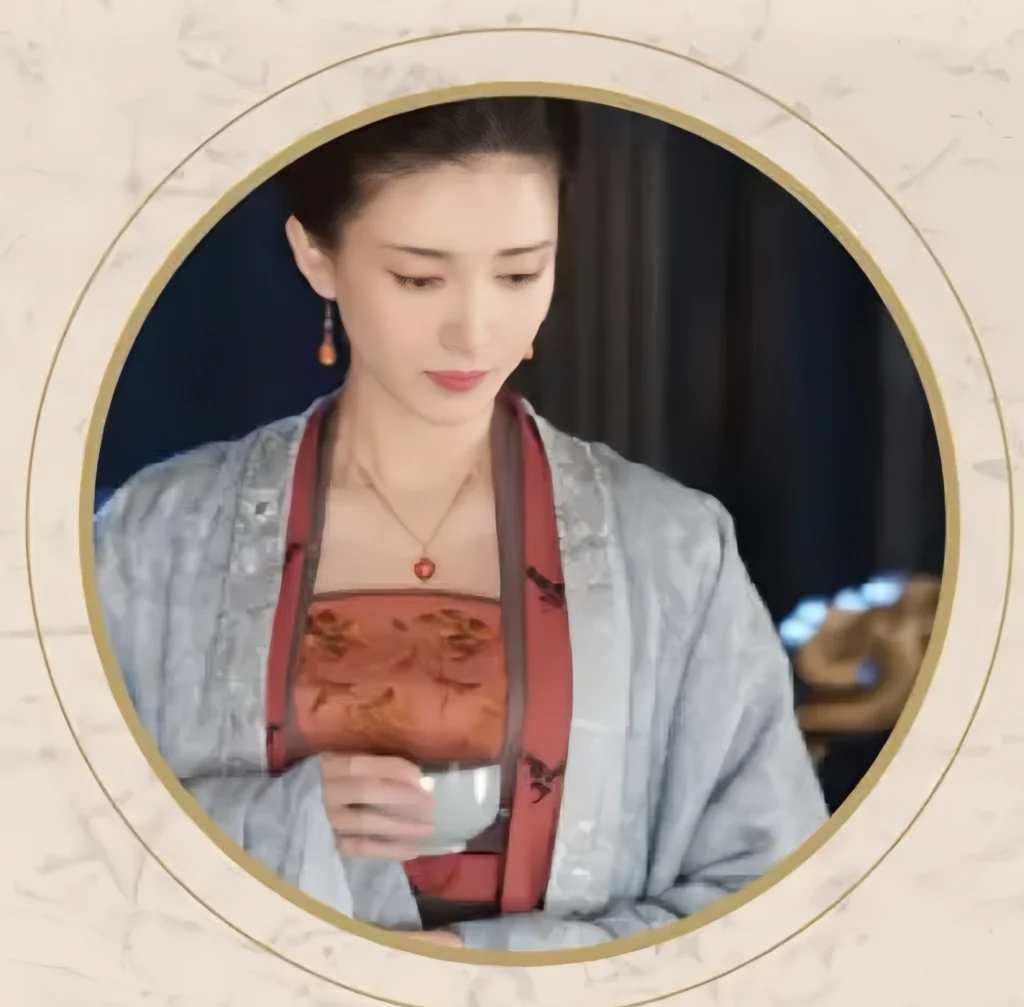
Beizi
The beizi is the most iconic Song garment, worn by women of all classes as both everyday and ceremonial attire. Worn alone or layered under formal robes, it’s sleek, form-fitting, and elegantly simple, embodying Song’s minimalist aesthetic.
Beizi came in three collar styles: straight-collar front-buttoned, slanted-collar cross-front, and round-collar cross-front, with straight collars being the most popular. The beizi flattered the figure, accentuating a slender, upright silhouette, and was often made of luo, crepe, or silk for a flowing, carefree look, epitomizing Song’s refined elegance.
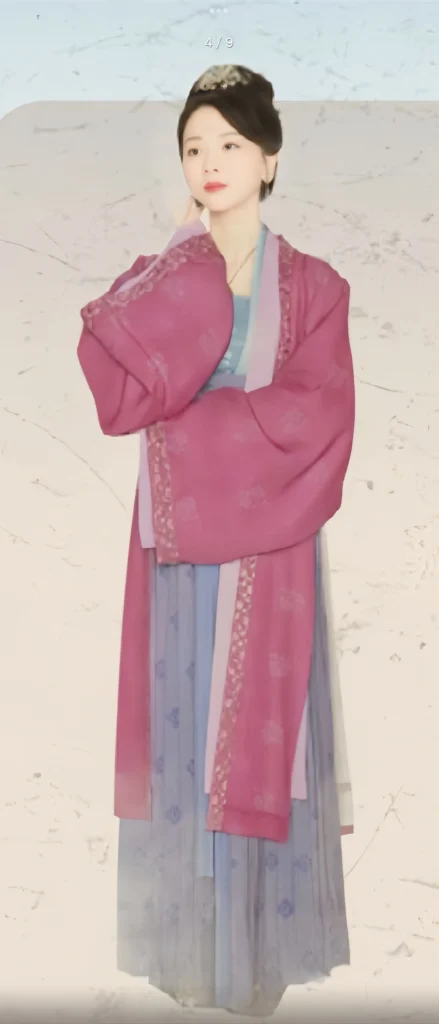
Ruqun (Blouse and Skirt)
Song ruqun followed Tang styles, consisting of a blouse, skirt, and sash. Some women added a “jade ring ribbon” at the skirt’s center to prevent it from fluttering, maintaining an elegant posture while walking.
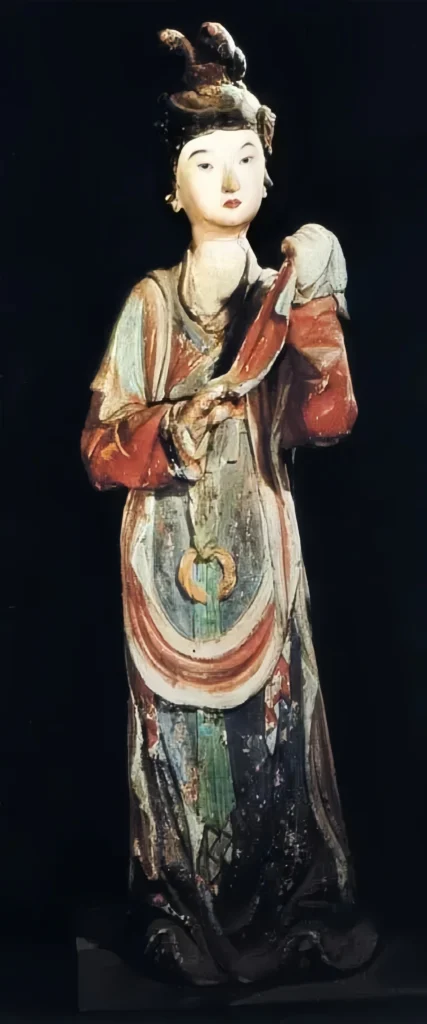
Two-Piece Skirt
Unique to the Song Dynasty, the two-piece skirt was made of four fabric panels sewn into two sections, joined at the waistband. With intricate pleats and tailored seams, it hugged the body, creating a slim, polished silhouette with slits for ease of movement. Other skirt styles included hundred-pleat skirts, single-piece skirts, and four-panel three-pleat skirts.

Wide Sleeves (Daxiu)
Originally a casual outfit for imperial consorts, daxiu (wide-sleeved robes) became a ceremonial garment for women of all classes. Paired with xiapei (decorative sashes), they were called “large-sleeved robes with capes.” The xiapei featured long, ornate sashes secured with pendants at the front and tucked into a pocket at the back.
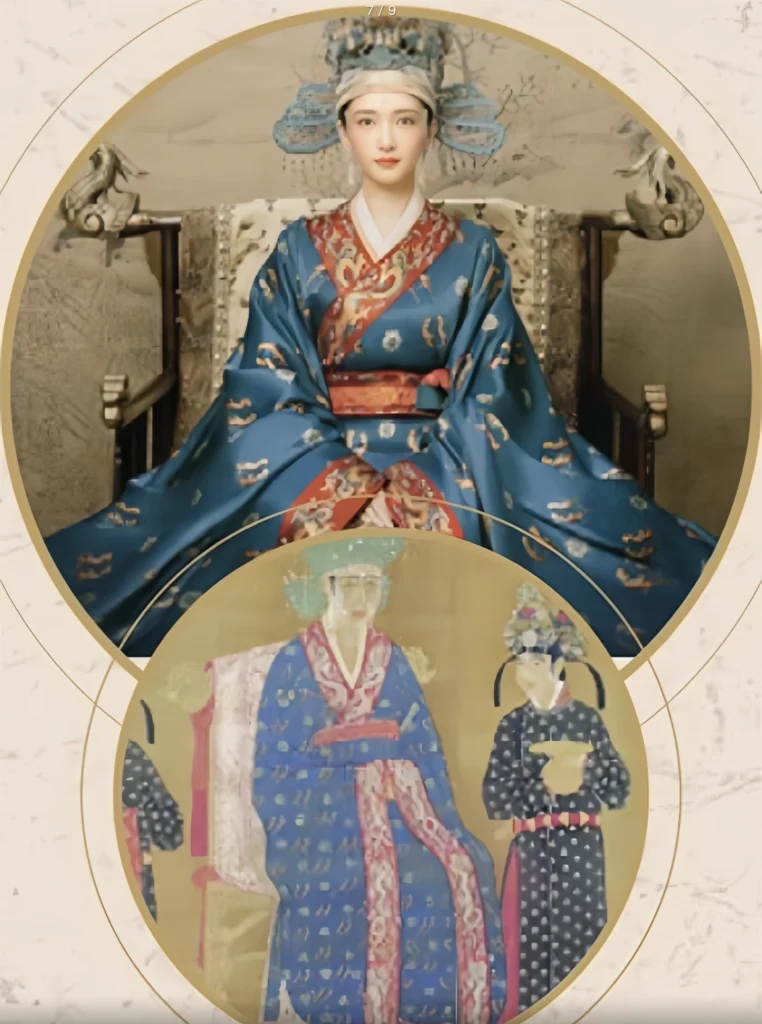
Shirt (Shanzi)
The shanzi was a practical women’s garment for daily tasks or leisure, often seen in paintings like Along the River During the Qingming Festival. These short shirts, typically knee-length, had narrow sleeves, a cross-collar, and no ties for simplicity.

Trousers (Kua)
Kua were unisex pants worn under skirts, distinct from modern closed-loop pants. Laid flat, the waistband split left and right, resembling a skirt with a sewn bottom. Song outfits often layered skirts, crotch panels, trousers, and inner linings for a complete look.
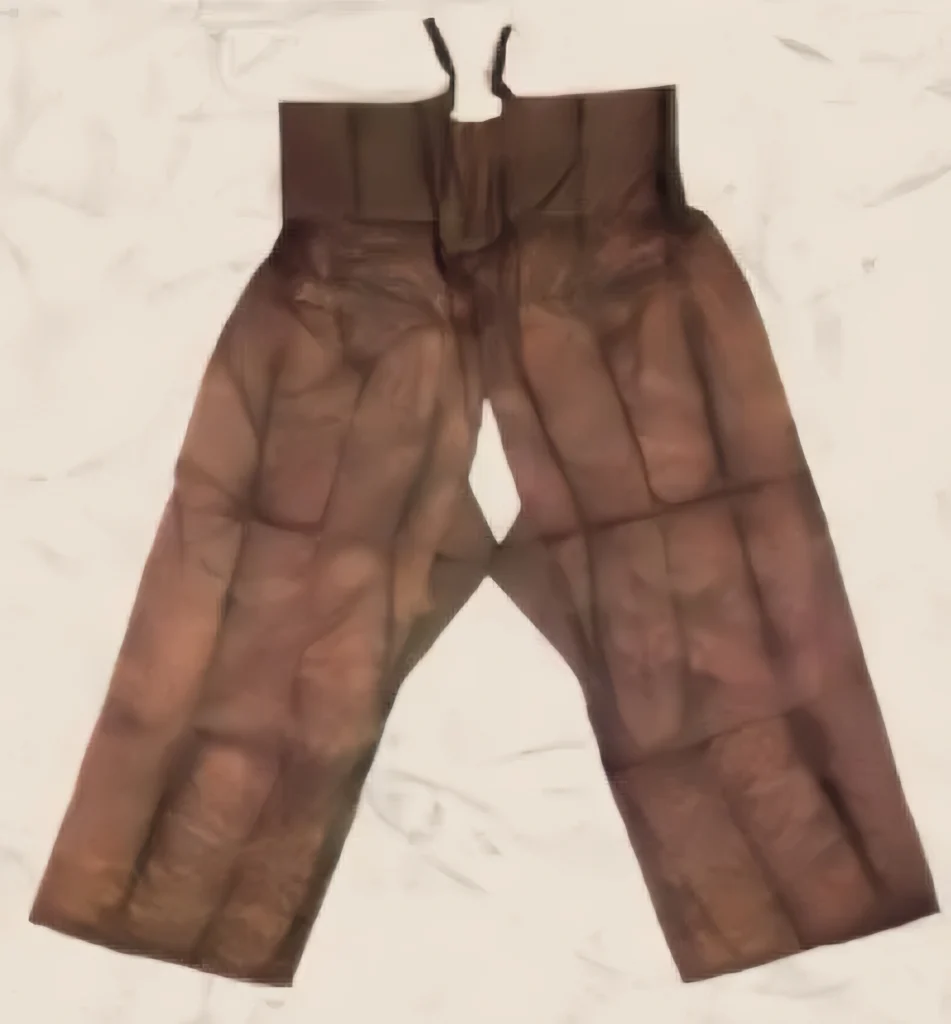
Why Song Dynasty Hanfu Matters Today
The Southern Song fashion aesthetic resonates with modern audiences for its minimalist elegance and cultural depth. The beizi garment, ruqun style, and other Song designs inspire contemporary Hanfu creators, blending historical authenticity with modern flair. By wearing Song Dynasty Hanfu, you connect with a legacy of refined beauty and cultural pride.
Styling Tips for Modern Hanfu Enthusiasts
To incorporate Song Dynasty Hanfu into your wardrobe, focus on lightweight fabrics like silk or luo for authenticity. Pair a beizi garment with modern jewelry for a fusion look, or style a ruqun style with minimalist accessories for everyday wear. For inspiration, visit China National Silk Museum for insights into traditional silk craftsmanship.
Conclusion
Song Dynasty Hanfu offers a timeless blend of elegance and simplicity, with styles like the beizi garment and ruqun style captivating modern audiences. These five iconic designs showcase the beauty of Southern Song fashion and its enduring appeal. Whether you’re attending a cultural event or exploring Hanfu for daily wear, these styles will inspire your wardrobe with their minimalist charm. Ready to embrace minimalist Hanfu? Start your journey with these elegant designs today!
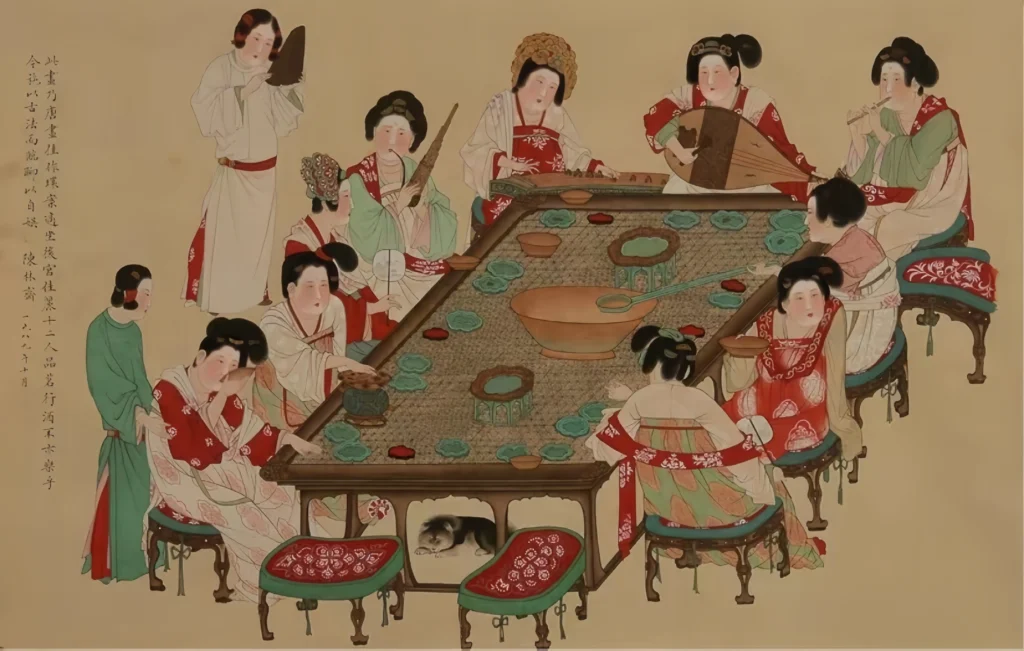


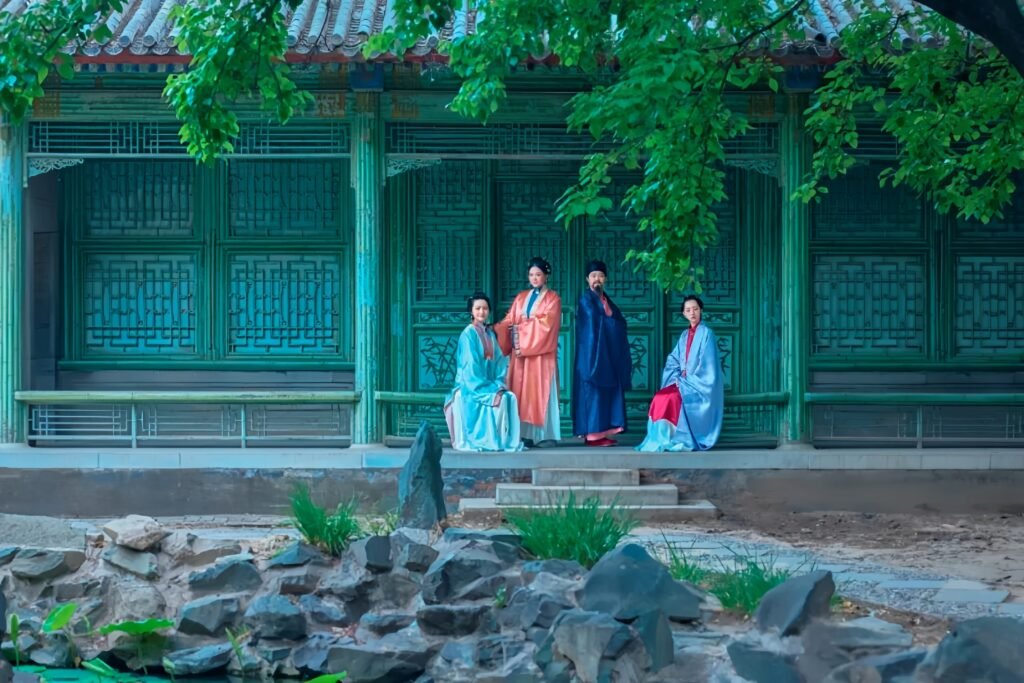

Responses